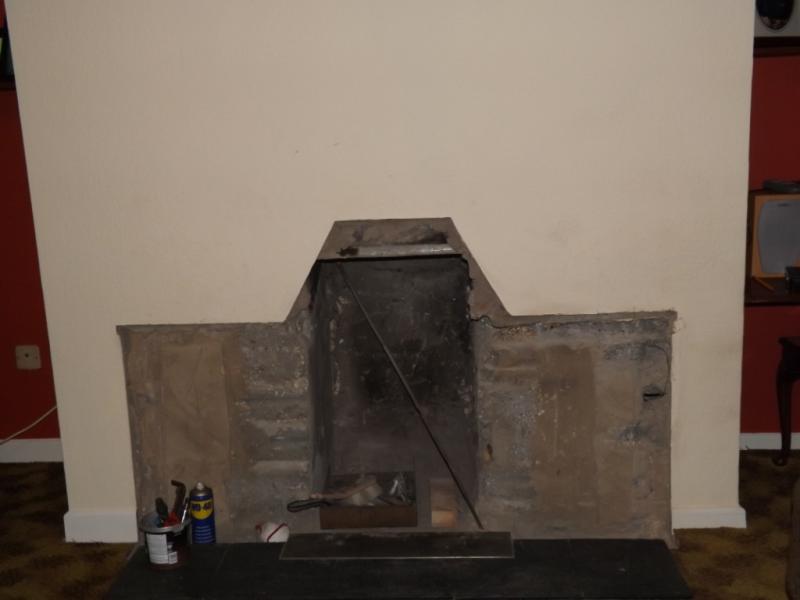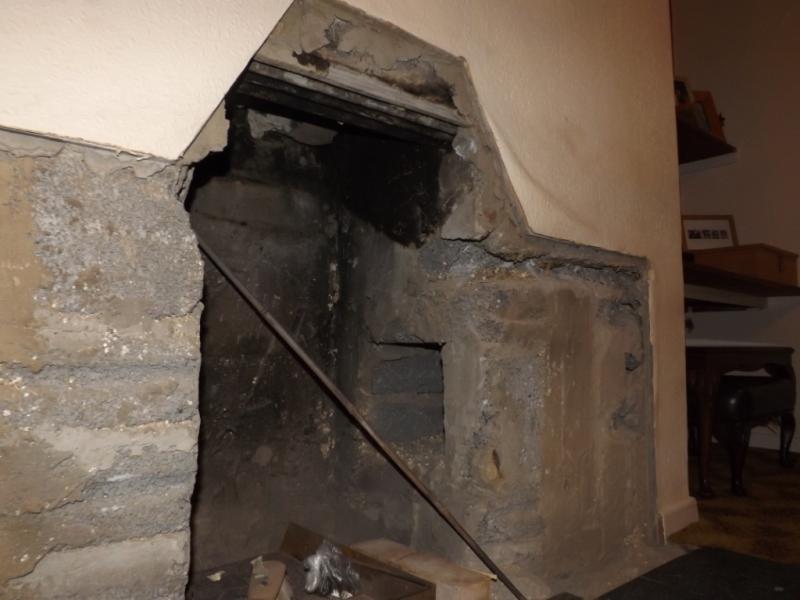Hi all. I've a question that I'd like opinion on. See photos below for reference.
I want to insert a wood burner into my existing 1960's chimney breast. I removed an old rayburn rhapsody 401 and have cleaned out the whole space, not removed any bricks yet. (I've exposed a big void/gap on the right where back boiler pipes were).
The brest goes to ceiling height at 74" width, then narrows to 32" up to the roof. The brest is 32" deep.
There's a metal lintel 38" wide centered to the original opening and from the floor to its underside it's 30".
In a nutshell I want to insert an ash beam (6"x 6"x maximum width) at about 46" height and open up the underside, removing the existing metal lintel.
My questions are:
would an ash beam 6x6 be man enough?
what is the maximum width of beam I could use?
what would be the maximum opening width?
what have I missed?
I want to insert a wood burner into my existing 1960's chimney breast. I removed an old rayburn rhapsody 401 and have cleaned out the whole space, not removed any bricks yet. (I've exposed a big void/gap on the right where back boiler pipes were).
The brest goes to ceiling height at 74" width, then narrows to 32" up to the roof. The brest is 32" deep.
There's a metal lintel 38" wide centered to the original opening and from the floor to its underside it's 30".
In a nutshell I want to insert an ash beam (6"x 6"x maximum width) at about 46" height and open up the underside, removing the existing metal lintel.
My questions are:
would an ash beam 6x6 be man enough?
what is the maximum width of beam I could use?
what would be the maximum opening width?
what have I missed?





